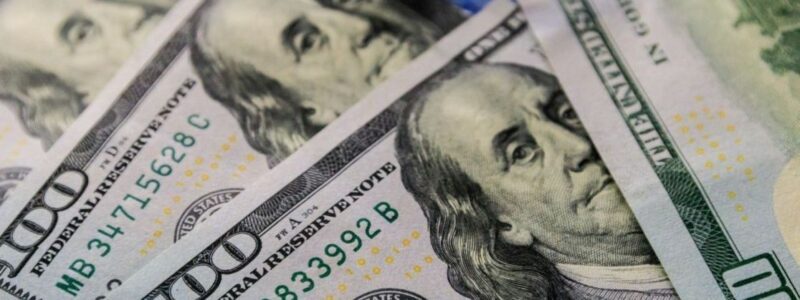
The U.S. dollar is getting cheaper against the euro, the yen and the pound sterling in trading on Friday after a strong strengthening at the end of the previous session.
The ICE-calculated index showing the dollar’s dynamics against six currencies (euro, Swiss franc, yen, Canadian dollar, pound sterling and the Swedish krona) lost 0.21% in trading, while the broader WSJ Dollar Index lost 0.2%.
The euro/dollar pair is trading at $1.0616 as of 8:20 a.m., up from $1.0597 at market close Thursday.
The pound/dollar exchange rate rose to $1.1977 from $1.1947 the day before.
The value of the U.S. currency in a pair with the yen dropped to 136.46 yen from 136.77 yen at closing of the previous session.
On Thursday the dollar gained 0.7% against the euro and the pound and 0.4% against the yen. Signals of a resilient U.S. labor market confirmed investors’ belief that the Federal Reserve (Fed) may raise the benchmark interest rate higher than previously planned.
However, statements from Atlanta Federal Reserve Bank (Fed) President Rafael Bostick, in which traders saw dovish signals, calmed the market somewhat.
Bostick, who does not have a vote on the Federal Open Market Committee (FOMC) in 2023, said during a press briefing Thursday that he would support a 25 basis point (bps) increase in the Fed’s benchmark interest rate at the March meeting. He noted that the U.S. central bank, in his view, should proceed cautiously, given the pent-up effect of policy tightening that could manifest itself soon.
When asked when the Fed stops the cycle of raising the rate, Bostic said that the appropriate situation for this may occur by mid-end of the summer of this year, Bloomberg reported.
Fed Board of Governors member Christopher Waller said Thursday that if the next batch of statistics on the U.S. economy shows slowing inflation and some weakening of the labor market, he would be willing to support “a couple more hikes” of the Fed rate – to a maximum of 5.1-5.4 percent from the current 4.5-4.75 percent.
“However, if this data continues to show that U.S. economic activity remains too ‘hot,’ we will need to raise the rate above that level to be sure that the momentum for easing inflation is not lost,” Waller said.